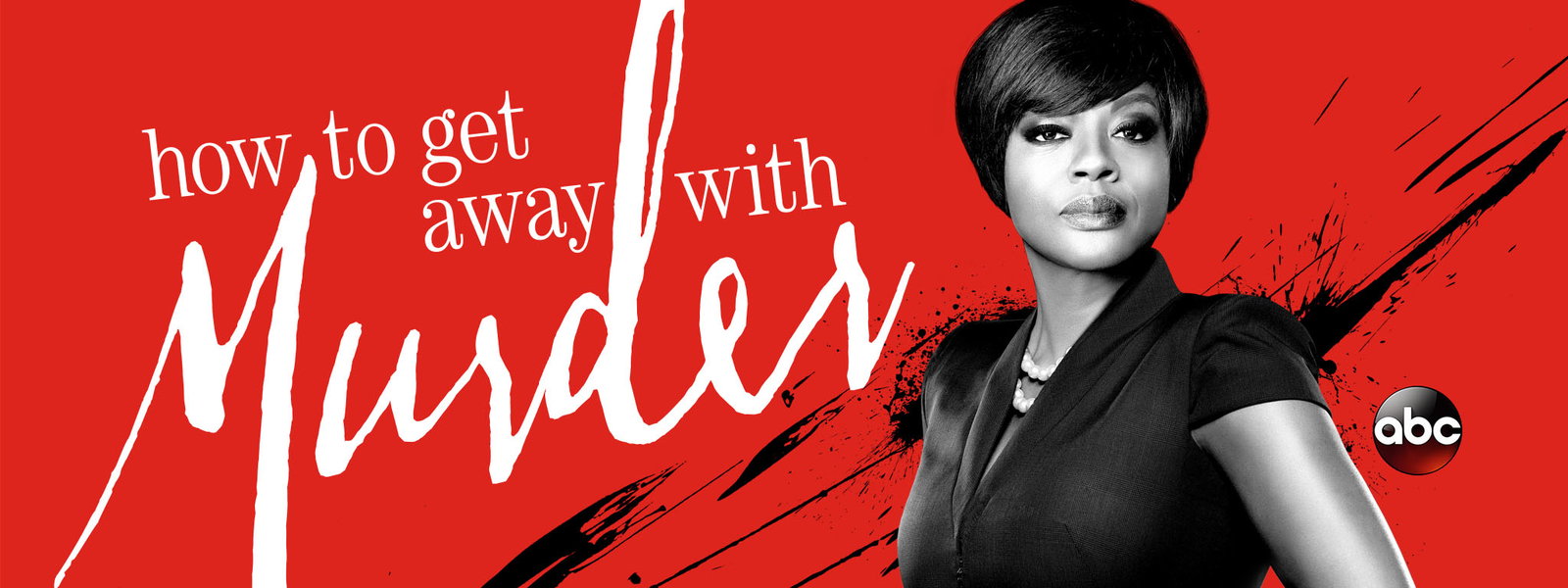“Think carefully, everything after this moment will not only determine your career but life. You can spend it in a corporate office drafting contracts and hitting on chubby paralegals before finally putting a gun in your mouth or you can join my firm and become someone you actually like. So decide: do you want the job or not?” – Annalise Keating, HTGAWM
At face value, there is much to commend How To Get Away With Murder: a fascinating premise, a strong central black female character, clever use of the law applied to each case, a strong script and use of flashbacks and flash forwards to keep audiences engaged and guessing.
Perhaps a tad less clever than it thinks it is (naming S1E10 “Hello Raskolnikov” is showing off more than demonstrating a pertinent comparison to the psychological aspects of Dostoevsky‘s Crime and Punishment – the guilt eating away the character is a contrived device), but lots of worthwhile ingredients in the formulaic soup. This reminds me of the biblical quotation inscribed on Dostoevsky’s tombstone:
Verily, verily, I say unto you, Except a corn of wheat fall into the ground and die, it abideth alone: but if it dies, it bringeth forth much fruit – John 12:24
Where is goes wrong is by adding to the mix gossipy personal melodrama reminiscent more of soap than soup, one case that drags on amid others resolved in one episode, and, ultimately, a murder for which the main protagonists, professor of law and defence attorney Annalise Keating and a group of law students she has chosen to do the spade work on her cases, must extricate themselves – as if students on a law degree at a (fictional) top US university didn’t have enough to do already.
The flash forwards cease when the narrative reaches the part of the story where this murder occurs, not necessarily for the better of the story, but this and the ongoing case form the majority of the remaining episodes, and, presumably, at least part of series 2. They ring every possible twist, then some, out of what is at face value a relatively simple murder investigation, to the point where it becomes almost a farce.
Perhaps that’s unfair, since there are moments in court and in Keating’s lectures that are gripping, though a comparison to series 1 of Murder One would not prove favourable.
For example, the characters have a tendency to behave in stereotypes (including the rich jock whose old man is a high court judge and who makes crudely misogynystic remarks at 10-minute intervals; and the slutty gay student who uses sex illegally to gain vital facts about the cases); the inclusion of regular panting sex scenes (gay and straight) seems perfunctory, prurient and adds nothing to the plot, but it is the sort of sex where the women never take off their bras. Couldn’t offend the advertisers, could we?
All of the above plus the occasional blinding revelations of each protagonist’s private lives and personal life are perhaps no less than what you would expect, as is the tendency for series to go on at considerable length, I did experience diminishing returns the longer I watched. In short, let nothing about this series let you forget that it is working to a defined formula.
Now for the good bits. I was not aware of Viola Davis before The Help, where she was truly excellent but treated subserviently (literally and metaphorically) to white actresses. Be in no doubt she is a strong actress in what is mostly a strong stand-out tough cookie role – other than the fact that she is required to become increasingly fragile, emotional and helpless as series 1 progresses, while remaining dominantly assertive in her professional life. Light and shade notwithstanding, I wondered whether a male lead, or for that matter a white female would be required to be so uncharacteristically tearful in front of her professional colleagues and students?
That said, one of the most effective scenes in series 1 has Davis’s Keating taking off her wig, her false eyelashes and her make-up, and appearing before the camera with naked face. One of the least effective aspects is her liaison with ex-cop Nate Lahey (Bobby Brown), whose six-pack and bulging pecs suggest he would be more at home in Mr Universe than the acting skills called upon in this series. Come to think of it, maybe Luke Cage would be more his style?
Much of the action takes place in Keating’s home, which I presume to be a largely American phenomenon, one conveniently permitting frequent interaction with her unfaithful husband Sam Keating (Tom Verica), who also works from home. Given how much is made of his infidelity, one presumes he was a serial offender to the point that she decided that if you can’t beat ’em, join ’em. Joking aside, there is a lot about this relationship and its history that doesn’t ring quite true, but then I suspect more back story is going to follow, complete with many more flashbacks.
As for the students, a good proportion of the tale is told through the eyes of honest, clean-cut, morally savvy, brown-eyed boy Wes Gibbins (English actor Alfred Enoch), which character comes out of the series with integrity only lightly singed. He’s a likeable actor playing a likeable character, though we have yet to get to the skeletons in his closet (series 2?)
In fact, all the students have their flaws, exposed in turn. There is the gay one, Connor Walsh (Jack Falahee); the would-be bride with dodgy inlaws-to-be, Michaela Pratt (Aja Naomi King); the jock, Asher Millstone (Matt McGorry); the hispanic one, Laurel Castillo (Karla Souza.) Very PC, and also noticeable that the judges portrayed are all either black, women or both, just like real life. Not!
Oh, and add to the mix the long-time suspect and Wes’s love interest Rebecca Sutter (Katie Findlay), Connor’s eventual love interest Oliver Hampton (Conrad Ricamora), and Annalise’s two associates: one who sleeps occasionally with students, Bonnie Winterbottom (Liza Weil) and two who sleeps with students, Frank Delfino (Charlie Weber), and Anna-Mae’s fearsome mother Ophelia (Cicely Tyson, once Mrs Miles Davis), you get the impression the producers have thrown the kitchen sink at this drama.
Quite a few well-balanced inmates at casa Keating, huh? That’s without the “recurring characters” and the “guest stars” who make it for one or at most two episodes. Gets pretty crowded in there, I can tell you. If anything, this is a bit too rich, and needs to focus more on fewer characters to be truly convincing. Over-egging the pudding doesn’t work in the long term, even if this is much easier plotting to follow than many of its ilk.
But then, creator and writer Peter Nowalk knows his stuff, knows which buttons to press to win awards, and how to spin a yarn to keep a series going for a many a series, having done so writing for Grey’s Anatomy and other series. Small wonder that Shonda Rhimes, creator of GA, is also executive producer of HTGAWM and presumably very supportive of a strong black woman being the central focus of this series.
In spite of misgivings, and the risk of diminishing returns, I will probably watch series 2. Most people would probably enjoy at least a flavour, though my message to the American producers is that sometimes less is indeed more, and that they should not automatically feed the unquenchable demand for more more more by churning out episode after episode after episode for the hell of it. Make each one count and not slip by in a binge-watch craving, there to be consumed and discarded.
By the way, there is a denouement at the end of series 1, if you can wait that long or still care. Who really killed Lila? And what else has happened… Watch it and move on.













